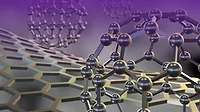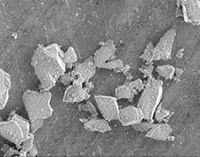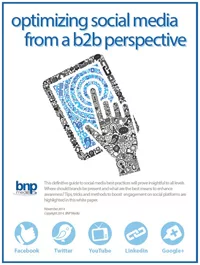Graphene as a Chemical Additive
Increasing Durability in Architectonic Waterborne Latex Paints

Image credit: Nedrofly, iStock, via Getty Images.
Objectives and Context
It has already been demonstrated graphene exhibits unique electrical, mechanical, and thermal properties that can bring significant improvements for many technical applications.1 The paint and coatings industry is one of the sectors that should be deeply transformed by this new technology. The use of graphene as corrosive inhibitor in industrial coatings has been widely reported in the past5 but the exploitation of its assets for architectonic and decorative coatings are still limited especially in regards with the waterborne latex resin coatings. The present work first shows the reasons why use of graphene boosts the performance of architectural coatings. Then, as an illustration, two examples of successful product developments Gerdau Graphene already launched in 2023 will be presented:
- Floor paint with enhanced durability.
- Wall paint with increased wash resistance.
Finally, a comprehensive study brings an attempt to understand the role of graphene in increasing paint durability and scrub resistance without abrasive paste.
Graphene Waterborne Dispersion
Gerdau Graphene produces waterborne graphene dispersions having compatibility with latex paints. Those dispersions typically have a high solids content (10 wt.%) and were found to be highly stable before and after incorporation into waterborne latex paints. Gerdau Graphene guarantees the quality of its dispersions through analytical characterization in accordance with ISO 80004 TS such as Scanning Electron Microscopy (SEM) and Raman spectroscopy. As an illustration, examples of graphene waterborne dispersion characterization are shown below. The SEM images depicted deagglomerated graphene sheets with a lateral size around 4 µm, indicating a well-dispersed state (Figure 1). Raman spectroscopy further confirmed the quality of the graphene, highlighting its low defect levels and high crystallinity (Figure 2). The number of Intercoupled graphene layer number is below 10 (Figure 3), this material can be considered as genuine few-layer graphene according to ISO 80004 TS.
FIGURE 1 | SEM images of waterborne graphene dispersion.


FIGURE 2 | Raman median spectrum of waterborne graphene dispersion.

FIGURE 3 | Intercoupled layer number distribution.

Experimental: Graphene Application in Latex Paint
Experiment 1: Floor Latex Paint in Pindamonhangaba, Brazil (2022)
Paint Preparation
A generic commercial formulation of floor latex matt paint was used, meeting Brazilian standards. The paint was produced on a pilot scale (1000 liters), with and without 0.05 wt. % graphene. After preparation, the paints were stored at room temperature for characterization and performance tests, including pH, viscosity, stability field tests, and abrasion resistance.
Field Test
Two bike lanes were painted at Gerdau Pindamonhangaba as depicted in Figure 4. In both locations, asphalt surfaces were thoroughly cleaned with a high-pressure water gun before application. It is essential to emphasize that both locations were free from any previous coating. After drying, 2 or 3 coats of latex paint were applied using a paint roller. The latex paint was initially diluted with an additional 30% of water for the application of the first coat and with only 10% for the subsequent coats. Only one coat per day was applied, allowing the paint to cure overnight. The applications conditions for each location are detailed in Table 1. A monthly visual inspection was conducted to assess the wear rate of each paint application.
FIGURE 4 | Paint application location in Gerdau Pindamonhangaba plant.

TABLE 1 | Paint application location characteristics.

Results
The floor latex paint produced with graphene was tested both in the lab and in the field. In lab, graphene in this range of concentration doesn’t significantly impact pH and viscosity of the paint (Table 2). There was no noteworthy change in these parameters observed over a period of 3 weeks. Stability test conducted in oven at 60ºC for 3 weeks did not reveal any significant differences between graphene paint compared to reference in terms of separation or pigment segregation. Interestingly, graphene also did not demonstrate any significant enhancement of abrasion resistance, as measured by the ABNT NBR 14940 standard (Figure 5).
TABLE 2 | Viscosity and pH after production.

FIGURE 5 | Comparison between reference and graphene paint as measured by the ABNT NBR 14940 standard.

However, field tests at the Gerdau Pindamonhangaba plant revealed that the graphene-enhanced paint exhibited better durability under real-world conditions, particularly during the rainy season. The paint with graphene maintained a more uniform coloration and exhibited less wear compared to the non-graphene paint, suggesting that graphene may help reduce paint consumption and improve durability as illustrated in Figure 6.
FIGURE 6 | Months ageing (A1 – 0,05% Graphene) (top) versus 6 months ageing (A2-Reference) (bottom)


Experiment 2: Floor Latex Paint in Mogi das Cruzes, Brazil (2023)
Paint Preparation
An industrial-scale production of 5000 liters of floor latex paint, formulated with and without 0.05 wt. % graphene. The same raw materials were used, except for necessary pigment adjustments to avoid color discrepancies.
Field Test
In the Mogi das Cruzes field tests, the paint was applied to create bike lanes. Concrete surfaces were thoroughly cleaned with a high-pressure water gun before application. It is essential to emphasize that the location was free from any previous coating. After drying, 3 coats of latex paint were applied using a paint roller. The latex paint was initially diluted with an additional 30% of water for the application of the first coat and with only 10% for the subsequent coats. Only one coat per day was applied, allowing the paint to cure overnight. Paint with graphene and reference paint without graphene were applied alternatively every 1- to 2-meter-long interval as shown in Figure 7 in order to make sure external aggressive conditions will affect in the same way the evolution of both types of paint. A monthly visual inspection was conducted to assess the wear rate of each paint application.
FIGURE 7 | Paint application location in Gerdau Mogi das Cruzes plant. REF: reference paint without graphene | G2D: paint with 0.05% graphene.

Results
Graphene-enhanced paint demonstrated significantly better performance, showing less wear over time. The difference in wear between both conditions (with/without graphene) started to be significantly noticeable after approximately 200 days exposure and this discrepancy accelerated during the rainy season (September-March) as illustrated in Figure 8. The positive impact of graphene in terms of durability is easily noticeable.
FIGURE 8 | Chronological evolution in both typical areas with 0.05% graphene (up) & no graphene (bottom)

Experiment 3: High PVC Wall Paint with Graphene Incorporation
Preparation of the Paint
A standard commercial formulation of high PVC latex matt paint was provided. The paint was produced at a lab scale (1 liter) with and without 0.01% graphene. Performance testing focused on abrasion resistance according to ABNT NBR 15078 (without abrasive paste).
Results
Graphene at 0.01% improved abrasion resistance significantly, suggesting it could replace wash promoters like sodium silicate without affecting pH as shown in Figure 9.
FIGURE 9 | Comparison between reference and graphene paint as measured by the ABNT NBR 15078 standard

Experiment 4: Understanding Study on How Graphene Enhances Paint Performances
Preparation
To gain a deeper understanding of graphene's role in enhancing latex paint, a study involving only graphene and latex resin was conducted. This latex is a standard commercial acrylic-styrene copolymer, had a solid content of 51 wt.% and a glass transition temperature of 25 °C. The preparation involves several steps as illustrated in Figure 10. First, graphene previously dispersed in water was directly mixed with the polymeric latex under mechanical agitation with a Cowles disc for 5 minutes at 1000 rpm, aiming to achieve a graphene concentration of 0.7 wt.% relative to the dry polymer. Subsequently, the admixture was left to rest for 24 hours to facilitate the release of any incorporated air. A film of the mixture was applied using a bird-type film applicator with a 100 μm gap onto a glass surface coated with carnauba wax. The film was then oven-dried for 2 hours at 60°C. Afterward, the film was easily peeled, ready to use for the subsequent measurements and its final thickness was measured using a Mitutoyo (Tokyo, Japan) 543-390B digital height indicator. Thickness of the films was approximately 40 ± 2 µm. For microscope, nanoindentation and contact angle analyses, glass slides were coated with the previous graphene-latex admixture using a 100 μm wire-wound drawdown rod and then dried at 60 °C for two hours.
FIGURE 10 | Schematic diagram of the procedure of graphene/latex film.

Results
The graphene composite latex film demonstrates notable improvements compared to reference film, including a lower water vapor transmission rate (reduced by 70%) and increased surface hydrophobicity (+20% in contact angle), as illustrated in Figure 11. These enhancements can be attributed to the high impermeability properties of graphene nanofillers, which act as effective barriers within the coating, slowing down the penetration and diffusion of water. This "barrier effect" can be clearly visualized through optical microscope imagery shown in Figure 12. The impediment of moisture diffusion with polymeric matrix plays a crucial role in delaying the negative consequences associated with water absorption in polymer coating. These negative impacts include a drop in mechanical properties due to water plasticisation of polymer matrix or adhesion failure caused by water migration within the interstitial spaces between the coating and the substrate. As mentioned previously in literature,4 the improved surface hydrophobicity of graphene composites acts as an additional obstacle for water penetration across the film (Figure 11). The combination of those two effects potentially explains the enhanced durability of the paint, especially evident during the rainy season. Interestingly, the lower N2 flow measured across the latex film containing graphene suggest a lower level of porosity (Figure 11). This may indicate that graphene may function as a pore-filling agent, smoothing out natural defects resulting from the latex film formation process, thereby contributing to improved aging resistance.
FIGURE 11 | Comparison between reference and graphene paint. Top left: WVTR. Middle: contact angle. Bottom: porosity.



FIGURE 12 | Optical microscope image by transmission of graphene composite latex film.

Abrasion or wear resistance can be correlated with the mechanical properties of materials, with hardness being a particularly relevant parameter. Hardness is a measure of a material's resistance to permanent or plastic deformation. In polymeric coatings, the deformation of surface irregularities is typically plastic, and hardness plays a pivotal role in determining the extent of the actual contact area and, consequently, the scale of the wear process2 In this study, it is assumed that, during the abrasion process of polymeric coatings such as the methodology described in ABNT NBR 14940 and 15018, the most likely failure mechanism is plastic deformation. Additionally, two types of contact modes during abrasion process are considered: blunt and sharp contact as depicted in Figure 13. Finally, the stiffness of the abrasive material is presumed to be infinitely greater than that of the abraded material.
FIGURE 13 | Contact mode. Top: blunt contact. Bottom: sharp contact.3


It has been demonstrated that in the case of blunt contact such as a brush or tire over paint, the critical load Py can be expressed as followed:3

Here, H represents the hardness of coating, E* stands for the reduced elastic modulus of the coating and R is the contact circle radius. In this scenario, a material with a low elastic modulus is likely to exhibit a higher abrasion resistance. Essentially, this means that wear rates are more likely to increase when the deformation of surface irregularities is plastic rather than elastic. On the other hand, in the case of sharp contact such as abrasive paste over paint, the critical load Py can be expressed as followed:3

Where hr represents the prescribed residual penetration depth after contact and C3 is a constant that depends on the projected area of contact. In this scenario, hardness is the dominant parameters governing the abrasion process.
Nanoindentation analyses, as illustrated in Figure 23, reveal a remarkable property of graphene when incorporated into the latex film. It contributes to an increase in hardness while simultaneously reducing the elastic modulus which are typically considered as directly related properties.
FIGURE 14 | Mechanical properties enhancement of graphene latex film. Top: Hardness. Middle: Reduced elastic modulus. Bottom: H3/E2 parameter.



In the case of blunt contact, the crucial parameter is represented by the ratio H3/E2. Graphene seems to provide a substantial advantage to the coatings, exhibiting a value approximately 10 times higher than the reference material. This significant difference could account for the positive results observed in field tests involving brushes and tires, as well as the enhanced abrasion resistance measured according to ABNT NBR 15078 without abrasive paste. In sharp contact situations, graphene also contributes to the desired direction by increasing hardness, although to a more moderate extent, approximately +50% compared to the reference. However, this increase may not be significant enough to substantially impact abrasion resistance measured according to ABNT NBR 14940 when abrasive paste is involved. Furthermore, it is essential to note that this understanding study exclusively focused on the interaction between latex polymer and graphene, without considering the presence of mineral fillers, which constitute a substantial part of a paint formulation.
Conclusions
Graphene has shown promise as a performance-enhancing additive for latex paints, particularly in improving durability and resistance to wear (without abrasive paste). The future Gerdau Graphene R&D projects related to latex paint will focus on developing graphene-based additives that enhance both durability and abrasion resistance with abrasive paste involving new technologies such as covalent graphene functionalization.
References
1 Grigorenko, A.P. Graphene Plasmonics. Nature Photon, 6, 2012, 749-758.
2 Lancaster, J. Relationships Between the Wear of Polymers and Their Mechanical Properties. Proc Instn Mech Engrr¸1968.
3 Meng, J.E. Recent Progress of Abrasion-Resistant Materials: Learning from Nature. Chem Soc Rev, 2015.
4 Oliver, W.C.; Pharr, G.M. An Improved Technique for Determining Hardess and Elastic Modulus Using Load and Displacement Sensing Indentation Experiments. J. Mater. Res, 1992.
5 Prasai, D. Graphene: Corrosion-Inhibiting Coating. ACS Nano, 6, 2012, 1102-1108.
Looking for a reprint of this article?
From high-res PDFs to custom plaques, order your copy today!








